Skip to content 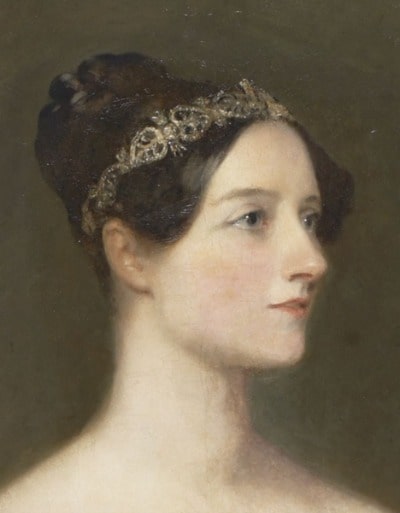
Ada Lovelace is considered to be the world’s first computer programmer.
Ada was born in England on December 10, 1815, the daughter of the famous and reckless poet Lord Byron. Soon after she was born, her parent’s marriage ended. Ada never saw her father again.
Her mother, Anne Isabella Milbanke had a great interest in mathematics. Byron called her the Princess of Parallelograms. Anne Isabella steered her daughter away from poetry and into mathematics and science.
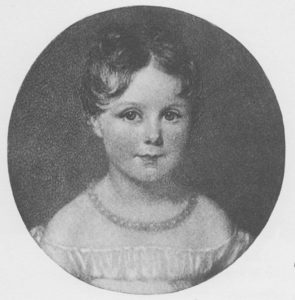
Ada Lovelace
Ada had a wonderful imagination. She decided that she would learn how to fly by studying birds’ anatomy. Ada made a set of wings. She wrote and illustrated her own book called Flyology and designed a flying mechanical horse.

Lord Byron
In 1829, Ada became temporarily paralyzed after having measles. She improved her math and science skills while bedridden. At age sixteen, restored to health, Ada was introduced to English society. She met famous scientists and became friends with the engineer Charles Babbage.
Babbage invented a machine called the Difference Engine. It worked like a giant calculator. He then designed a more complex machine he called the Analytical Engine. Babbage thought it would solve difficult mathematical calculations. The machine would then store these calculations. And it would also print them.
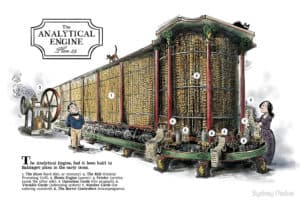
The Analytical Engine
Ada translated an article written about the Analytical Engine into English. She added her own notes. These notes contained an algorithm that would allow the machine to work. Ada’s algorithm is considered to be the first computer program.
The Analytical Engine was too expensive to build. But it is considered to be the first computer. And Charles Babbage is acknowledged as the “father of the computer.”
Charles Babbage designed his Analytical Engine to be capable of working with numbers. But Ada thought the machine had much greater possibilities. She envisioned it producing music, art, and writing, like modern computers.
Sadly, Ada died at age 36. Although she never met her father, she requested to be buried next to his grave in England.
If you like this post, then please consider sharing it and leaving a comment below. Thank you! Barbara Lowell
Books For Kids About Ada Lovelace:
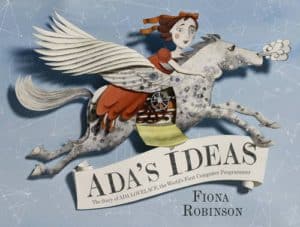
Ada’s Ideas: The Story of Ada Lovelace,
the World’s First Computer Programmer
by Fiona Robinson
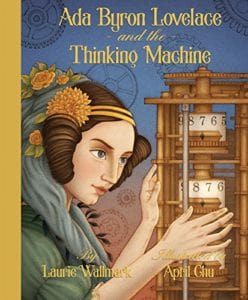
Ada Byron Lovelace and the Thinking Machine
by Laurie Wallmark, Illustrated by April Chu

Ada Lovelace Poet of Science
by Diane Stanley, Illustrated by Jessie Hartland
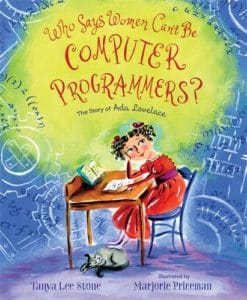
Who Says Women Can’t Be Computer Programmers?
The Story of Ada Lovelace
By Tanya Lee Stone, Illustrated by Marjorie Priceman

Wood, Wire, Wings: Emma Lilian Todd Invents an Airplane
By Kirsten W. Larson, Illustrated by Tracy Subisak
Emma Lilian Todd’s mind was always soaring–she loved to solve problems. Lilian tinkered and fiddled with all sorts of objects, turning dreams into useful inventions. As a child, she took apart and reassembled clocks to figure out how they worked. As an adult, typing up patents at the U.S. Patent Office, Lilian built the inventions in her mind, including many designs for flying machines. However, they all seemed too impractical.
Lilian knew she could design one that worked. She took inspiration from both nature and her many failures, driving herself to perfect the design that would eventually successfully fly. Illustrator Tracy Subisak’s art brings to life author Kirsten W. Larson’s story of this little-known but important engineer. 7-10 years
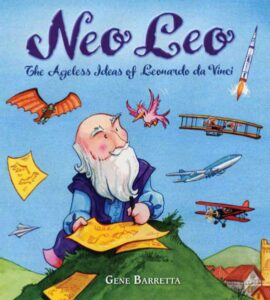
Neo Leo: The Ageless Ideas of Leonardo daVinci
by Gene Barretta
In 1781, Thomas Paine came up with a model for a single-span bridge. In 1887, Adolf Eugen Fick made the first pair of contact lenses. And in 1907, Paul Comu built the first helicopter. But Leonardo da Vinci thought of all these ideas more than five hundred years ago! At once an artist, inventor, engineer, and scientist, da Vinci wrote and drew detailed descriptions of what would later become hang gliders, automobiles, robots, and much more. In Neo Leo, Gene Barretta shows how Leonardo’s ideas — many inspired by his love of nature — foreshadowed modern inventions, offering a window into the future.

The Boy Who Invented TV: The Story of Philo Farnsworth
by Kathleen Krull, Illustrated by George Couch
Plowing a potato field in 1920, a 14-year-old boy from Idaho saw in the parallel rows of overturned earth a way to “make pictures fly through the air.” This boy was not a magician. He was a scientific genius. Just eight years later he made his brainstorm in the potato field a reality. He transmitted the world’s first television image.
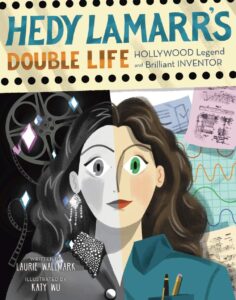
Hedy Lamarr’s Double Life: Hollywood Legend and Brilliant Inventor
By Laurie Wallmark, Illustrated by Katy Wu
To her adoring public, Hedy Lamarr was a glamorous movie star, widely considered the most beautiful woman in the world. But in private, she was something more: a brilliant inventor. And for many years only her closest friends knew her secret. Now Laurie Wallmark and Katy Wu tell the story of how, during World War Two, Lamarr developed a groundbreaking communications system that still remains essential to the security of today’s technology.
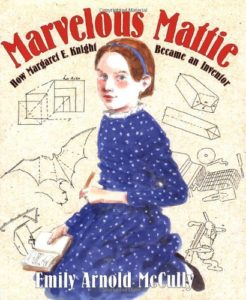
Marvelous Mattie: How Margaret E. Knight Became An Inventor
by Emily Arnold McCully
With her sketchbook labeled My Inventions and her father’s toolbox, Mattie could make almost anything — toys, sleds, and a foot warmer. When she was just twelve years old, Mattie designed a metal guard to prevent shuttles from shooting off textile looms and injuring workers. As an adult, Mattie invented the machine that makes the square-bottom paper bags we still use today.
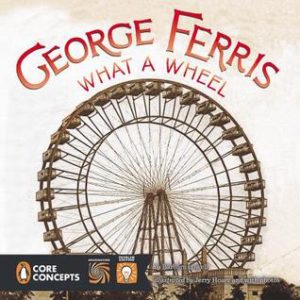
George Ferris What A Wheel
by Barbara Lowell, Illustrated by Jerry Hoare
Have you ever ridden a Ferris wheel? You can see for miles! But when the inventor of the Ferris wheel, George Ferris, first pitched the idea, everyone thought he was crazy. A 250-foot bicycle wheel that goes around and around and can carry 2,160 people in train size cars at the same time? Can’t be done, they said. But George proved them wrong. Teacher Guide available at: https://barbaralowell.com/teacher-guide-2/

George Crum and the Saratoga Chip
by Gaylia Taylor, Illustrated by Frank Morrison
Who invented the potato chip? George Crum did as a chef in a Saratoga Springs, New York restaurant in 1853. Who knew the potato chip was that old?

Papa’s Mechanical Fish
by Candace Fleming, Illustrated by Boris Kulikov
Clink! Clankety-bang! Thump-whirr! That’s the sound of Papa at work. Although he is an inventor, he has never made anything that works perfectly. That’s because he hasn’t yet found a truly fantastic idea. But when he takes his family fishing on Lake Michigan, his daughter Virena asks, “Have you ever wondered what it’s like to be a fish? Papa is off to his workshop. With a lot of persistence and a little bit of help, Papa — who is based on the real-life inventor Lodner Phillips — creates a submarine that can take his family for a trip to the bottom of Lake Michigan.
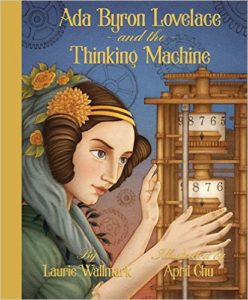
Ada Byron Lovelace and the Thinking Machine
by Laurie Wallmark, Illustrated by Amy Chu
Ada Lovelace, the daughter of the famous romantic poet, Lord Byron, develops her creativity through science and math. When she meets Charles Babbage, the inventor of the first mechanical computer, Ada understands the machine better than anyone else and writes the world’s first computer program.
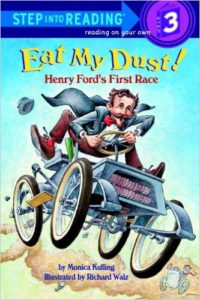
Eat My Dust! Henry Ford’s First Race
by Monica Kulling, Illustrated by Richard Walz
It’s 1901 and Henry Ford wants to build a car that everyone can own. But first he needs the money to produce it. How will he get it. He enters a car race, of course!
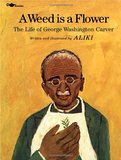
A Weed is a Flower: The Life of George Washington Carver
by Aliki
Award winning author and illustrator Aliki tells George Washington Carver’s story in this beautifully told and illustrated picture book.
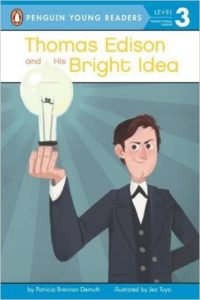
Thomas Edison and His Bright Idea
by Patricia Brennan DeMuth, Illustrated by Jez Tuya
As a curious child who was always asking questions, it’s no wonder Thomas Edison grew up to become a famous, prolific inventor. This easy-to-read nonfiction story follows Edison from his time in school to his career as a full-time inventor. Edison’s discoveries will fascinate and inspire all curious young minds!
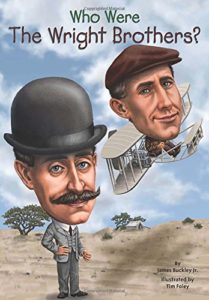
Who Were The Wright Brothers?
by James Buckley, Jr., Illustrated by Tom Foley
As young boys, Orville and Wilbur Wright loved all things mechanical. As young men, they gained invaluable skills essential for their success by working with printing presses, bicycles, motors, and any sort of machinery they could get their hands on. The brothers worked together to invent, build, and fly the world’s first successful airplane. These aviation pioneers never lost sight of their dream to fly and to soar higher!
The book descriptions used are primarily from the publishers.
If you like this post, then please consider sharing it and/or leaving a comment below. Thank you! Barbara Lowell, Children’s Author




















